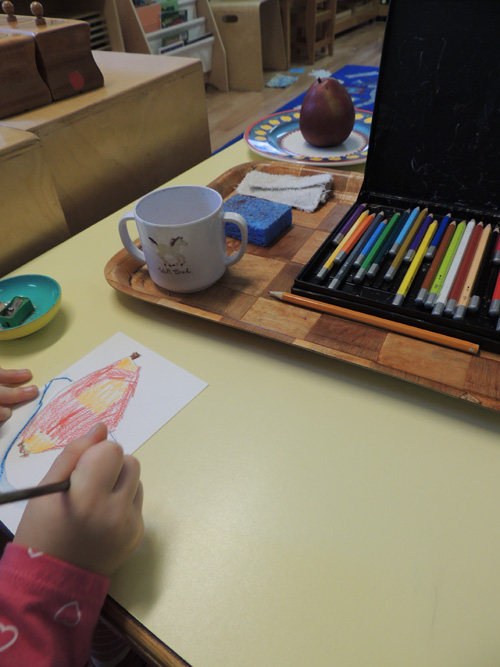 Given paper and a few crayons, the young child finds satisfaction and joy in the creative process, expressing herself with an ease envied by the adult who does not considers themself an artist. For the adult, their work is directed to the end product and is often limited by self-imposed ideas about quality and perfection. The child, on the other hand, is focused only on the process, free from judgment.
Given paper and a few crayons, the young child finds satisfaction and joy in the creative process, expressing herself with an ease envied by the adult who does not considers themself an artist. For the adult, their work is directed to the end product and is often limited by self-imposed ideas about quality and perfection. The child, on the other hand, is focused only on the process, free from judgment.
Observe the three-year old who will sit for long periods of time swirling various colours around and around the page making abstract shapes. The five-year old might paint a picture of her family, their elongated figures with oversized-heads and arms standing under purple clouds and a large yellow sun. Both are pleased.
The child’s artwork is complete when an inner level of development has been reached. Almost without any outward sign, the little artist puts down her crayon or paintbrush and walks away. She is done. She might even forget the picture on the table, or drop it en route to her next activity; she might give the picture away to a friend. There is no attachment to the end product. If there is, it is likely because the child has been requested by an adult to do a painting for them.
Children are natural artists. We do not need to teach them how to draw. Their freedom for expression is intact and simply requires the proper tools and open-ended space to explore. Through art, the child communicates feelings, explores shape and colour, creates ideas, and develops fine motor skills.
The Montessori approach to art reflects these needs. The shelf is stocked with a variety of mediums to work with: pencils, pastels, clay, scissors, glue, brushes, paint, and different types of paper. Lessons are given in the use of the artists’ tools, introducing the techniques and language of the genre: Impressionism, cubism, pointillism, sculpture, fresco, palette, brushstroke, bronze, crimson, cerulean, ochre… On the wall hang beautiful reproductions of artwork representative of various artists, eras, countries, and styles.
The Montessori teacher prepares a classroom environment that inspires, then steps back and observes the child at work.
 |
This photograph depicts a four-year old using water colour pencils and a paintbrush to record her impressions of the pear on the decorative plate.
|





